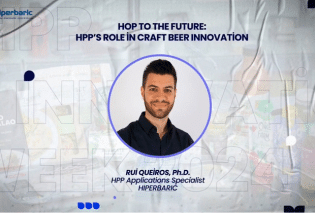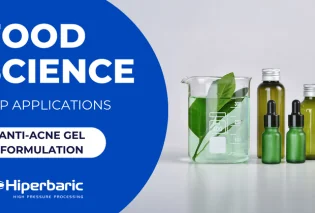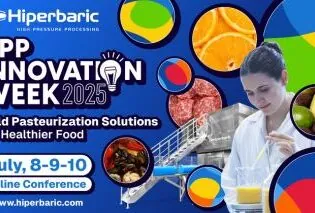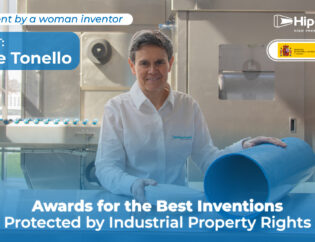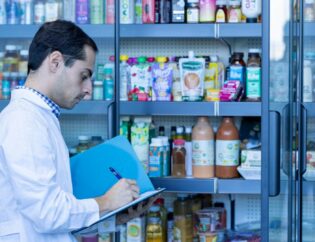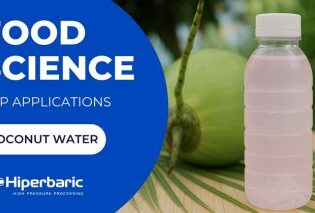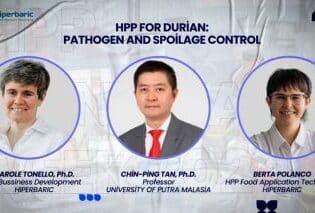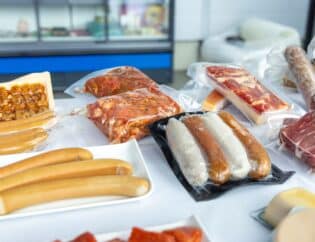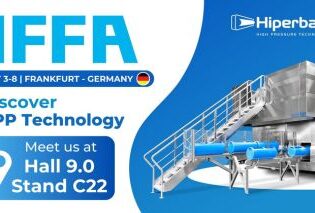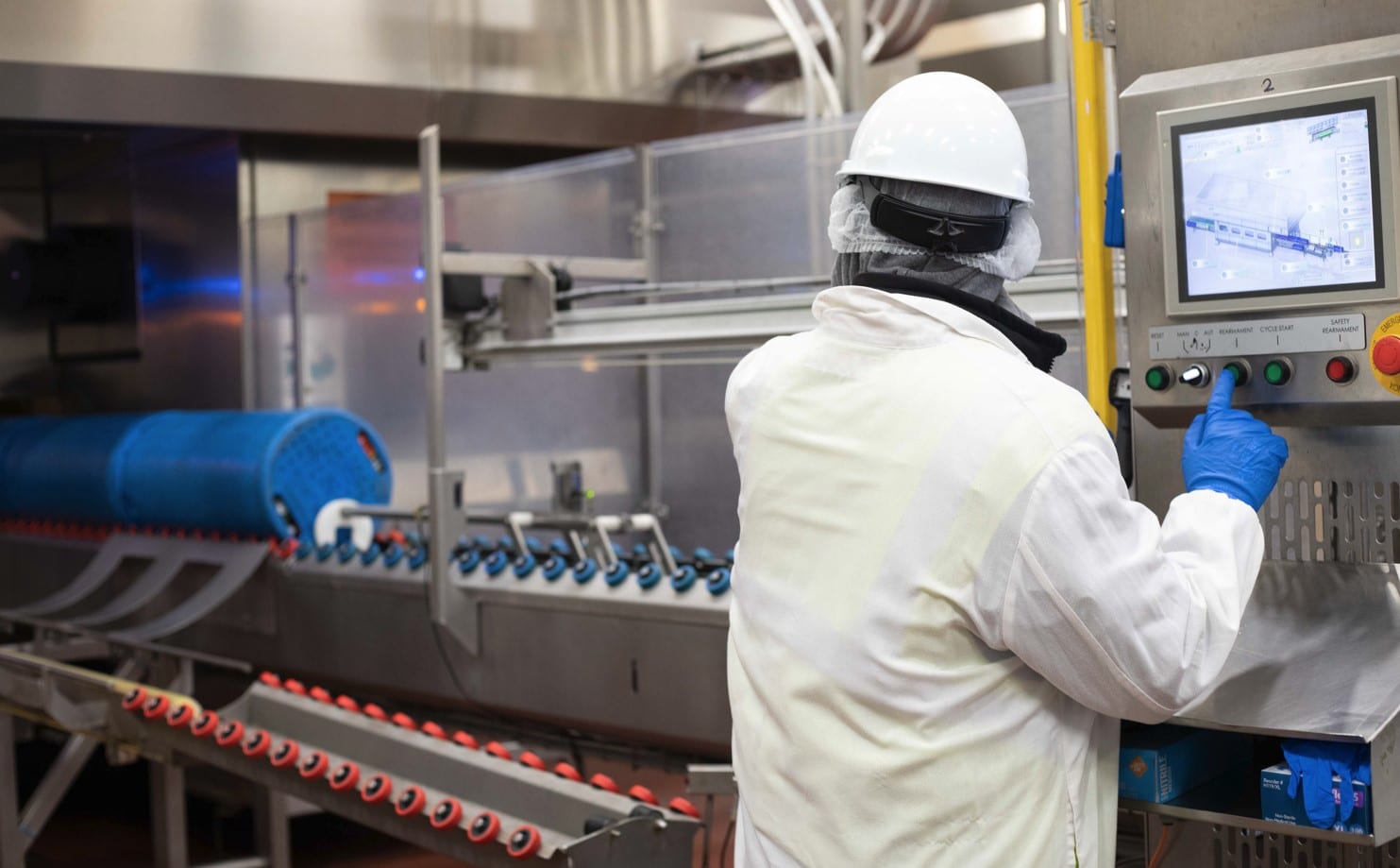
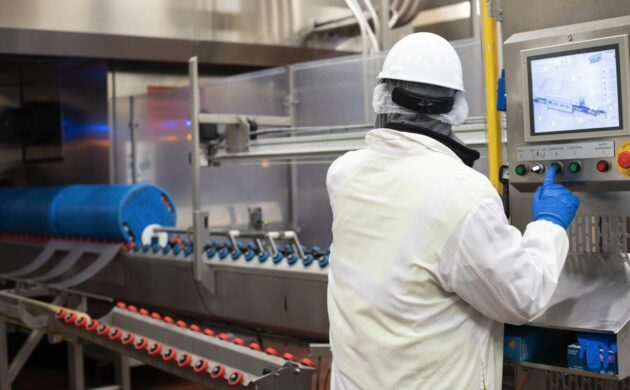
High pressure processing (HPP) is becoming increasingly popular for food and beverage manufacturers who want to keep their food safe, nutritious and tasting great. However, wide confusion is still generated among consumers and food industry professionals when concepts related to this technology are mentioned or compared with other methods. Keep reading this post where we disclose the most frequently asked questions (FAQ) regarding HPP.
High Pressure Processing or HPP is a non-thermal food safety solution that only using water and high presure inactivates harmful foodborne bacteria while maintaining a food’s quality, nutrition, and freshness. It also serves up additional benefits like no preservatives and extended shelf life. The product is subjected to high levels of hydrostatic pressure (300-600 MPa) from a few seconds up to several minutes. Another less common but equally valid ways to refer to this technology are “high hydrostatic pressure” and “pascalization”. Once, we have defined it, let’s start with the most frequently asked questions (FAQ) we receive.
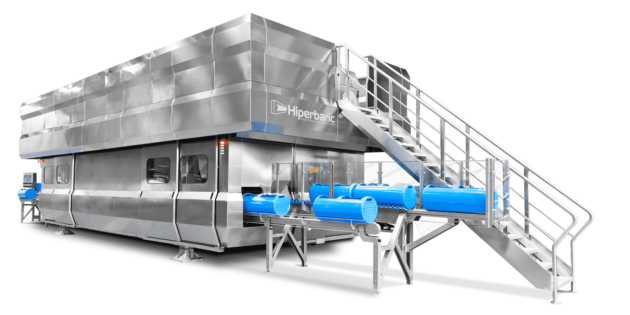
What are the requirements for HPP foods?
HPP technology is a hydrostatic process that relies on the compression of water to transmit pressure. Therefore, it is recommended that foods have a water activity (aw) above 0.96 to maximize the lethal effect on microorganisms. In other words, HPP is more effective in high aw products because the product will have a higher content of free water available to transmit the pressure, leading to a higher microbial inactivation and extended shelf-life. Keep in mind that moisture content is different from aw. A product can have a high moisture content and a low aw.
What are the main applications of HPP?
HPP has spread to a wide range of foods and beverages: from the most consolidated HPP applications, such as juices & beverages, meat, and avocado products, to the latest trends such as ready-to-eat (RTE) meals, plant-based dips, baby food and pet food. We recommned to visit the applications section of our website for a deeper understanding where it could be found commercial examples, and a wide variety of docuemnts and material of each product category can be found.
See below a diagram with the worldwide distribution of industrial HPP machines by food sectors:
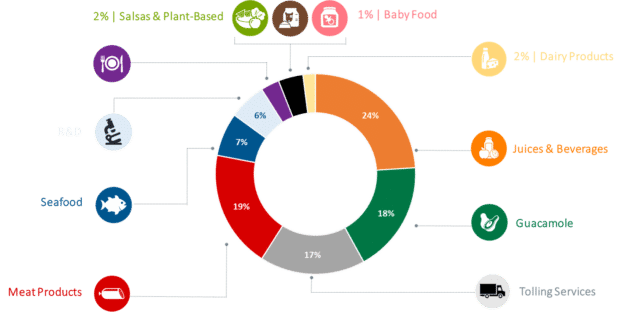
What foods cannot be processed by HPP?
To enjoy the advantages of HPP, products should have a high water activity content to maximize the lethal effect on microorganisms. In addition, this technology can lead to changes in the texture of some ingredients in the absence of a liquid or dressing surrounding them. Therefore it is not recommended to apply HPP to spices, powders, dry nuts or fruits, cereals, whole fruits, vegetable leaves and leafy salads, bread and pastries and other ingredients that fit in this description.
Does HPP affect the composition of foods or their sensorial properties?
HPP has minimal effects on vitamins, antioxidants, other micronutrients, and flavor and aroma compounds. Furthermore, it helps to better retain these compounds compared to conventional thermal processes. This is because HPP does not break covalent bonds, and only affects weaker non-covalent molecular interactions like hydrogen bonds, van der Waals forces, electrostatic and hydrophobic interactions. These interactions are responsible for the stabilization of the secondary and tertiary structure of proteins, complex carbohydrates, or biological structures such as lipid bilayers of cell membranes.
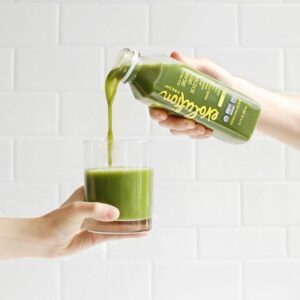
What are the advantages of HPP over other non-thermal technologies?
HPP is the most known and used among non-thermal food processing technologies (e.g. pulsed electric fields, ultraviolet radiation, ionizing radiation or membrane filtration) in the USA, Europe, Asia and Oceania. Unlike the other non-thermal technologies, HPP is completely non-thermal and used for liquid and solid foods… Moreover, as a post-packaging intervention, it allows to remove additives and to obtain a clean-label product.
Does HPP guarantee food safety?
Definitely. HPP guarantees food safety and achieves an increased shelf life, while maintaining the optimum attributes of fresh products. In addition, HPP is highly recognized by numerous food safety authorities (FDA, EFSA…). Food safety is achieved by inactivating vegetative pathogens, including bacteria, viruses, molds, yeasts and parasites by applying 400 MPa (4000 bar/58,000 psi) to 600 MPa (6000 bar/87,000 psi), for a few seconds to around 6 minutes.
However, since there are some pressure resistant microorganisms and enzymes, and even at the maximum operating pressure of industrial equipment (600 MPa/6000 bar/87,000 psi), spores are not inactivated, other hurdles should be taken into account. For example, low pH (<4.6), presence of natural antimicrobials and refrigerated storage (4-6 °C), could help to further guarantee food safety together with HPP technology.
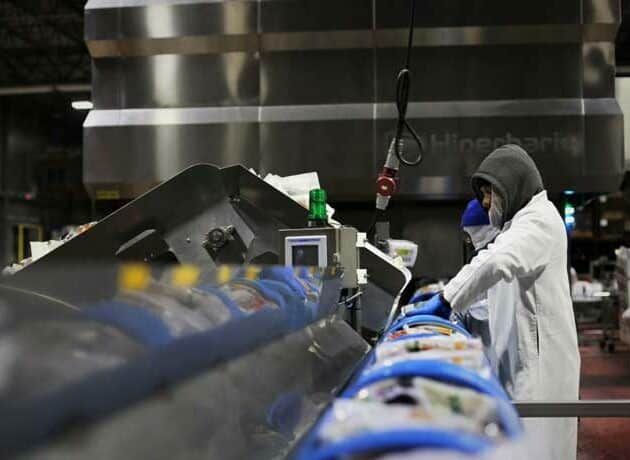
Do foods need to be packaged for HPP?
HPP is an ‘’In-pack’’ process, meaning that the products need to be packaged when processed, usually in their final package. Packaging materials must be flexible (to withstand compression), elastic (to recover their original shape after decompression), and waterproof (as they will be submerged in water). These considerations make plastic polymers the most versatile option. Check out the HPP packaging section to learn more.
Hiperbaric has developed the HPP In-Bulk technology, a breakthrough innovation that allows processing liquids without being packaged, i.e. in bulk before packaging. This opens the range of other packaging solutions that can be used like carton bricks, glass bottles, and metal cans.
Is HPP really a non-thermal process?
HPP is a non-thermal technology as the temperature during the process is below 40 °C/100 °F. Still, it is true that during this process a slight temperature increase occurs inside the vessel. This phenomenon is called adiabatic heating and is associated with water compression. In the particular case of water, the temperature increases around 2-3 °C for every 100 MPa/1000 bar/15,000 psi of applied pressure. Therefore, taking into account the maximum operating pressure of industrial equipment (600 MPa/6000 bar/87,000 psi), the food/water temperature would only increase 18 °C/64 °F during holding time, which is typically between 2-6 min. Furthermore, the adiabatic heating is completely reversible upon pressure release, and the product returns to the temperature level before the HPP cycle.
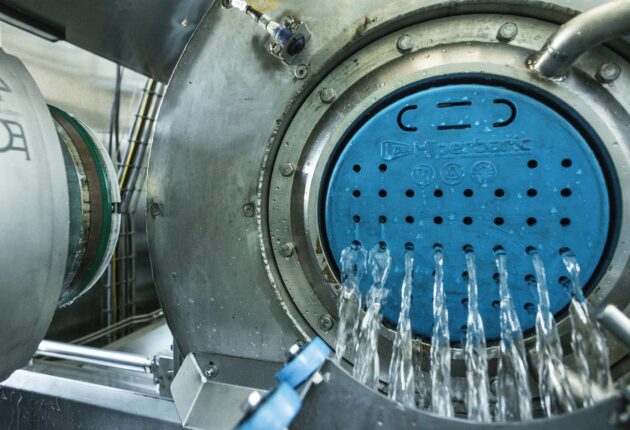
Can HPP replace heat pasteurization or sterilization?
HPP technology allows the inactivation of vegetative microorganisms, parasites and viruses by applying 400 MPa (4000 bar/58,000 psi) to 600 MPa (6000 bar/87,000 psi), for a few seconds to around 6 minutes. However, as with thermal pasteurization, some pressure resistant microorganisms remain viable in the product after processing, as well as bacterial spores which are not inactivated by HPP. Furthermore, HPP does not completely inactivate most enzymes, and for this reason, HPP does not allow the development of stable foods marketed at room temperature. On the other hand, HPP-treated products better retain sensory and nutritional properties in comparison to the conventional thermal process.
In conclusion, HPP technology delivers “fresh-like” products with similar microbiological results as heat pasteurization, however it is not a sterilization technique.
Can HPP foods be stored at room temperature?
It is recommended to store HPP products in refrigeration (4-6 °C), since the cold chain will act as a hurdle to slow down undesirable microbial growth enzymatic activity, and chemical reactions during the shelf-life.
This is easily understood, since some microorganisms can be resistant to high pressure and recover during the shelf-life. The same happens with the enzymes that are not completely inactivated: if the cold chain is maintained their residual activity will be lower. Likewise, chemical reactions that are not related to HPP but lead to sensory or nutritional changes, take place at faster rates under temperature abuse (10 °C) or room temperature levels.


